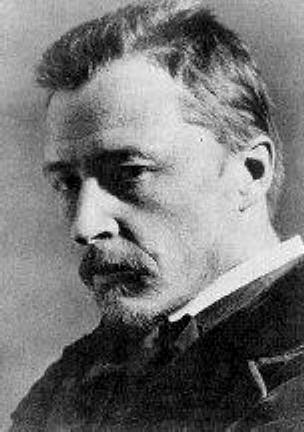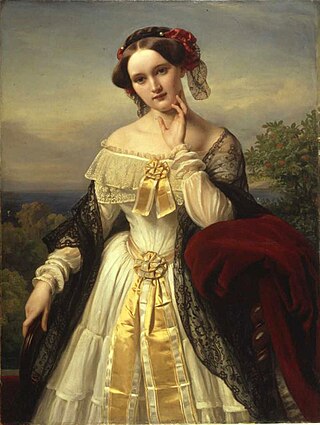
Gero Trauth (born 25 June 1942) is a German painter, graphic artist, porcelain illustrator and designer.

Gero Trauth (born 25 June 1942) is a German painter, graphic artist, porcelain illustrator and designer.
Gero Trauth was born as a single child to Dr. med. Fritz Trauth and his wife Irene Jung in Neurode/Eulengebirge, Lower Silesia. In 1946 the family had to move to West Germany and settled in Siegen. Trauth is married to Renate Lohmann with two grown-up daughters.
Trauth started his education in 1959 as a volunteer at the Buchkunst-Eggebrecht-Presse in Mainz led by Hans Schmidt. Then he studied Fine Arts, Graphics and Design at the Staatliche Werkkunstschule (today University of Applied Sciences, Mainz) from 1960 to 1965. His teachers were Gedo Dotterweich (1983-1986 president of the Deutscher Werkbund ), Alfred Tilp, Heinz Müller-Olm (sculpture), Aloys Ruppel (history of calligraphy and books at the Johannes-Gutenberg-University), Helmut Presser (director of the Gutenberg Museum, history of book illustration). The studies were completed by seminars given by Heinz Mack (ZERO Lichtraum), Herbert W. Kapitzki and Anton Stankowski. In 1965, Trauth graduated with honors and gave a special exhibition at the Staatliche Werkkunstschule Mainz for a delegation of the ministry of Rheinland-Pfalz.
In 1962 Trauth met Bjørn Wiinblad through the help of designer Elsa Fischer-Dreyden. During his studies, Trauth frequently stayed in Copenhagen and Wiinblad became his artistic tutor and later his friend.
Trauth also became close friends with the Swedish painter and graphic-designer Gunnar Norrman († 2005) and his wife Ulla. They often visited each other and worked together at the same artistic printing press for copper gravure.
Since 1966, Trauth has been working as an independent painter and designer in his studio in Siegen. In 1972 he designed and built his private house. From 1967 to 1983 his works include sketches, graphics and sculptures for internationally famous art galleries such as Artes - Kunst unserer Welt 1982-1989, ars mundi - die Welt der Kunst 1982/1983 (release of the sculpture “Du” (You) both in a bronze and a marble version as well as posters and oil paintings. Trauth published two illustrated books entitled Verschollene Gärten (Forgotten Gardens) and Mein Herz ist ein Stern - Bilder wie Träume und Märchen (My heart is a star). His work as a designer ranges from ceramic tiles (Staatliche Majolika Manufaktur, Karlsruhe), fabric designs (Stuttgarter Gardinenfabrik, Taunus Textildruck), lamps (Bundesgartenschau Dortmund, Ambiente Messen Frankfurt a.M.), cutlery (department store GUM), pottery (Eternit AG) ceramic and stainless steel ornaments for public buildings as well as furniture designs. In 2000 he opened an exhibition house in Siegen (Gero-Trauth-Haus). [1]
In 1984 he began what was to be an extremely successful partnership with Villeroy&Boch/Heinrich–Porzellan in Selb which ended in 1997. During this time Trauth left his mark decisively on the range of products. The exclusive table settings and dinnerware were looked after by Trauth and Paloma Picasso whose objet d’art (collectors’ piece) “Paloma Picasso-Suite de Vase” was decorated by Trauth. Moreover, he designed bone china dinner services (Vie Sauvage, Arabian Fantasy und Happy Seasons). Numerous articles show his style, among others the exclusive objet d’art (collectors’ piece) “Magnum” (1990).
Trauth also created series of porcelain for the WWF (Symbiose Mensch – Natur, 1990) and the German Cancer Research (Deutsche Krebshilfe; (Träumereien, 1995). Moreover, series of Russian fairy tale motifs (Zaubermärchen aus dem Alten Rußland, Märchen der Wolga, Die Träume der Katharina) were created as well as other series (Zauberwelt der Manege, Liebespaare der Weltliteratur), annual Christmas plates, which were presented in Europe (Internationale Frankfurter Messen) and in the USA (Southbend-Fair, Chicago), V&B, Madison Avenue, New York.
In 2003 the new exhibition showroom Cappella Gero Trauth was designed by Trauth. It stands for the symbiosis of works from the world literature and Trauth's art works and is thought to be a refuge for his collectors. [2]
2005 : Vernissage and exhibition of water-color graphics on Heinrich Heine’s Buch der Lieder (Book of Songs, 1827) [3]
2008 : Vernissage and exhibition of oil paintings and graphics on Alexander Ostrovsky's Snegurochka (The Snow Maiden or Snowflake) [4]
2012 : Vernissage and exhibition of oil paintings and graphics on “Ich bin so wild nach deinem Erdbeermund”: Nymphs [5]
2013 : Vernissage and exhibition of oil paintings and graphics on “Indische Märchenwelt” (graphical interpretations of the Gita Govinda, Song of Govinda) [6]

Hugo Philipp Jacob Wolf was an Austrian composer, particularly noted for his art songs, or Lieder. He brought to this form a concentrated expressive intensity which was unique in late Romantic music, somewhat related to that of the Second Viennese School in concision but diverging greatly in technique.

The Gutenberg Museum is one of the oldest museums of printing in the world, located opposite the cathedral in the old part of Mainz, Germany. It is named after Johannes Gutenberg, the inventor of printing from movable metal type in Western Europe. The collections include printing equipment and examples of printed materials from many cultures.

Wesendonck Lieder, WWV 91, is the common name of a set of five songs for female voice and piano by Richard Wagner, Fünf Gedichte für eine Frauenstimme. He set five poems by Mathilde Wesendonck while he was working on his opera Tristan und Isolde. The songs, together with the Siegfried Idyll, are the two non-operatic works by Wagner most regularly performed.

Dichterliebe, A Poet's Love, is the best-known song cycle by Robert Schumann. The texts for its 16 songs come from the Lyrisches Intermezzo by Heinrich Heine, written in 1822–23 and published as part of Heine's Das Buch der Lieder. Along with the song cycles of Franz Schubert, Schumann's form the core of the genre in musical literature.
Vasile Hutopila is a contemporary Romanian painter of Ukrainian ethnicity. His works belong to impressionism.
Catrin G. Grosse, also known as Catrin Große, is a German painter, graphic designer and sculptor.

Carry Hauser, born Carl Maria Hauser, was an Austrian painter, stage set designer and poet.

Dodo, born as Dörte Clara Wolff, was a German painter and illustrator of the New Objectivity.

Bernhard Wilhelm Maria Pankok was a German painter, graphic artist, architect, and designer. His works are characterized by the transition between Art Nouveau and the International Style. His furniture and book design, such as the catalog for the German section of the Exposition Universelle (1900) in Paris, have garnered him the most recognition.

The Museum of Islamic Art is located in the Pergamon Museum and is part of the Staatliche Museen zu Berlin.

Kurt Martin was a German art historian. His career began in 1927 as curator of the Baden State Museum Karlsruhe. From 1934 to 1956, he was director of the Staatlichen Kunsthalle Karlsruhe. In 1940 he was appointed Head of the Municipal Museums of Strasbourg as well as Chief Commissioner of the Alsatian Museums. In 1956 he became Director of the Karlsruher Kunstakademie, and in 1957 General Director of the Bayerischen Staatsgemäldesammlungen. He was also a professor of art history.
Karl Konrad Friedrich Bauer (1868–1942) was a German artist, print-maker and poet. Bauer's traditional skills in draftsmanship made him a popular illustrator and portrait artist in the early 20th century. In his later life he made a number of portraits of Nazi leaders. His poetry was admired and promoted by Stefan George.

The State Academy of Fine Arts Stuttgart is a public fine art university in Stuttgart, Germany. It was founded in 1761 and has been located on the Weissenhof since 1946. Its campus consists of three buildings: the Altbau, Neubau 1 or "Architects' Building", and Neubau 2.
Wolfgang Kermer is a German art historian, artist, art educator, author, editor, curator of exhibitions, art collector and professor. From 1971 to 1984 he was repeatedly elected Rector of the State Academy of Fine Arts Stuttgart and thus the first scientific and at the same time youngest teacher in this position in the history of the university. Under his rectorate, the State Academy of Fine Arts Stuttgart was reformed in 1975 and 1978 on the base of two new university laws of the State of Baden-Württemberg and thus, for the first time in its history, authorized to set up diplomas for all courses. One of the accents of his work was the promotion of talented graduates of the academy: In 1978 he organized the first of the so-called ″debutant exhibitions″, an ″unconventional contribution to the promotion of young people″, supported financially by the State of Baden-Württemberg.
Michaela Kölmel was a German artist and university professor from Karlsruhe. Her artistic work included drawings, sculptures, site-specific installations, and interventions in public spaces.
Heinrich Schlitt was a German painter and illustrator, known for his fantasy motifs that feature gnomes, dwarves, and faeries. He was one of the in-house artists at the Villeroy & Boch ceramic company in Mettlach, Saarland, and his designs for their beer steins remain popular with collectors to this day.

Heinrich Nauen was a German Expressionist artist. He created oils, watercolors, and prints; as well as murals and mosaics. A large part of his output consists of landscapes and floral still-lifes.
Gertrude Degenhardt is a German artist, especially a lithographer and illustrator, based in Mainz. She is known for illustrating the texts and albums of Franz Josef Degenhardt and of other political writers and singers including François Villon, Liam O'Flaherty, Bertolt Brecht, and Wolf Biermann. In the 1990s, she turned to topics around women, portraying them in art books such Women in Music, Vagabondage in Blue, and Vagabondage en Rouge.
Michael Baurmann is a German sociologist whose main research interests are general theory of sociology, rational choice theory, social epistemology, and the epistemic dimensions of democracy. He is a senior professor at the Heinrich Heine University Düsseldorf and co-editor of Analyse & Kritik.
Gero Seelig is a German art historian and curator based in Schwerin, Germany. He is the Old Masters Curator at the Staatliches Museum Schwerin, in Schwerin, where he has worked since 2001. He is specialized in German and Dutch artists from the sixteenth and seventeenth centuries and has published extensively on prints, drawings, and paintings from these periods.